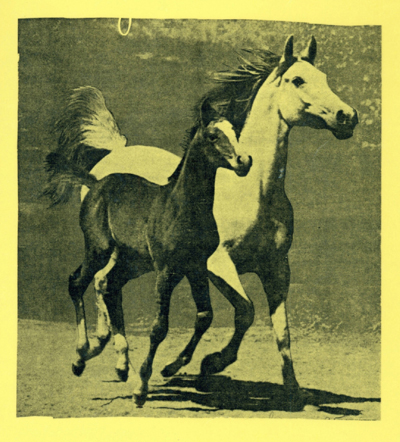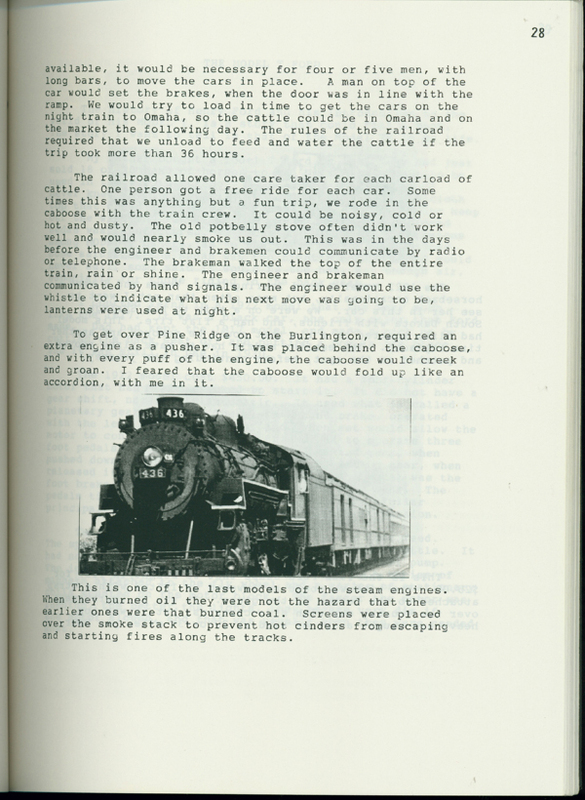059
Item
-
Title
-
059
-
Transcription
-
available, it would be necessary for four or five men, with long bars, to move the cars in place. A man on top of the car would set the brakes, when the door was in line with the ramp. We would try to load in time to get the cars on the night train to Omaha, so the cattle could be in Omaha and on the market the following day. The rules of the railroad required that we unload to feed and water the cattle if the trip took more than 36 hours.
The railroad allowed one care taker for each carload of cattle. One person got a free ride for each car. Some times this was anything but a fun trip, we rode in the caboose with the train crew. It could be noisy, cold or hot and dusty. The old potbelly stove often didn't work well and would nearly smoke us out. This was in the days before the engineer and brakemen could communicate by radio or telephone. The brakeman walked the top of the entire train, rain or shine. The engineer and brakeman communicated by hand signals. The engineer would use the whistle to indicate what his next move was going to be, lanterns were used at night.
To get over Pine Ridge on the Burlington, required an extra engine as a pusher. It was placed behind the caboose, and with every puff of the engine, the caboose would creek and groan. I feared that the caboose would fold up like an accordion, with me in it.
This is one of the last models of the steam engines. When they burned oil they were not the hazard that the earlier ones were that burned coal. Screens were placed over the smoke stack to prevent hot cinders from escaping and starting fires along the tracks.
-
Rights
-
To inquire about usage, please contact Archives & Special Collections, University of Nebraska-Lincoln Libraries. These images are for educational use only. Not all images are available for publication.
 Metzger Memories
Metzger Memories


